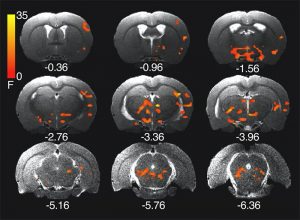
A figure from this study
Hot Off the Press – April 8, 2019.
The United States is amid an unprecedented opioid epidemic. From 2002 through 2016, the number of heroin users increased by 135% and the number of deaths attributable to heroin increased by 533%. Therefore, there is an urgent need for research into the neurobiology of opioid use disorder (OUD) to identify novel strategies for prevention, diagnosis, and treatment of OUD.
NIDA IRP scientists, Carmack, Keeley, Vendruscolo, Lowery-Gionta, Lu, Koob, Stein, and Vendruscolo, identified novel brain circuits that are engaged by environmental stimuli that predict heroin withdrawal. These cues engaged circuits involved in negative emotional learning that contribute to compulsive heroin taking and seeking. In particular, the hypothalamus and amygdala nuclei are key components of this conditioned negative reinforcement learning in opioid addiction.
These findings strongly indicate that biomedical and pharmaceutical research in OUD should be directed toward brain circuits of negative reinforcement learning. These efforts are currently underway at NIDA IRP.
Publication Information
Heroin addiction engages negative emotional learning brain circuits in rats. Journal Article
In: J Clin Invest, vol. 130, 2019, ISSN: 1558-8238 (Electronic); 0021-9738 (Linking).
